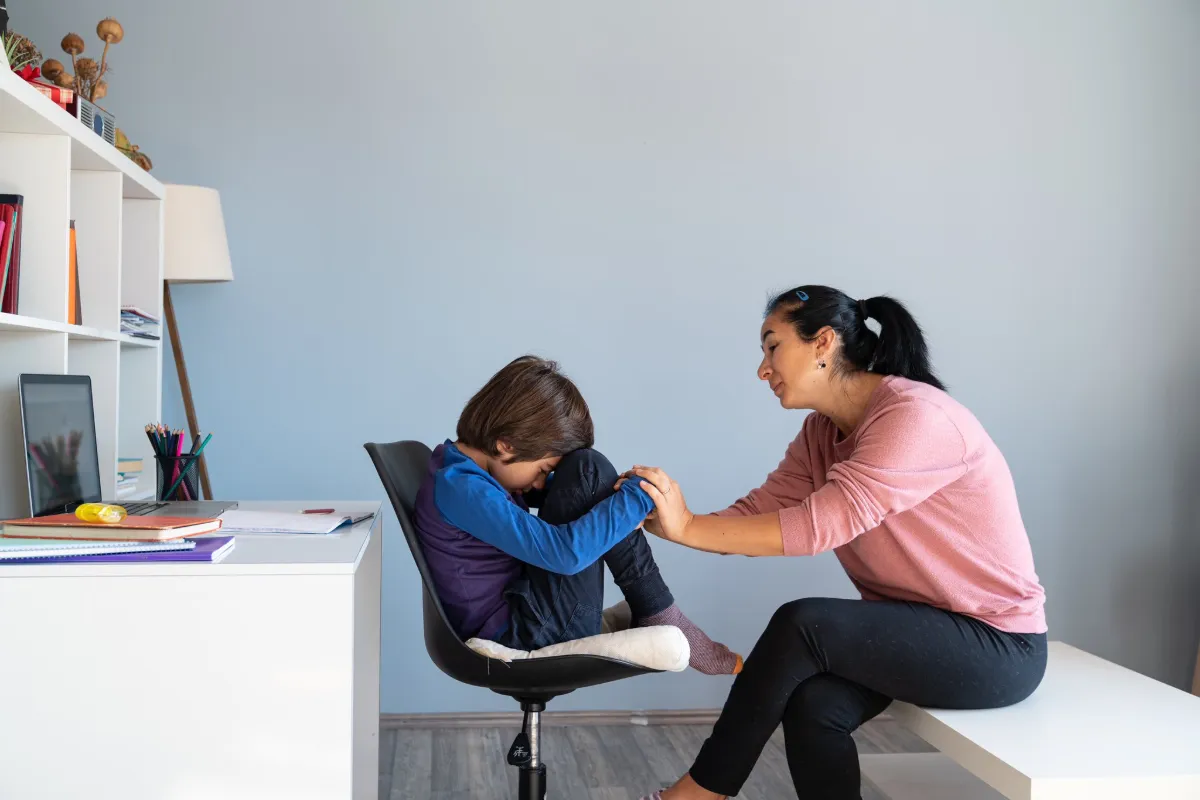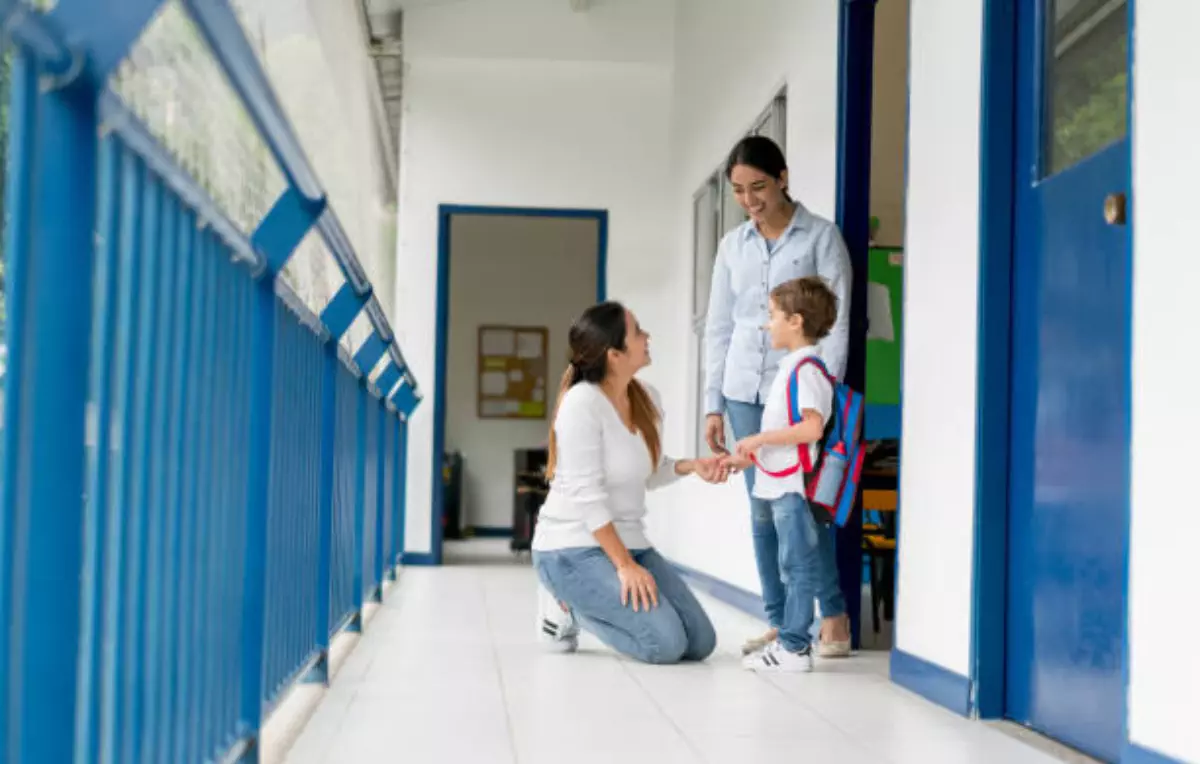
Moving to a new location can be a cause for anxiety for adults–what more for children who are transferring into an international school in Manila. While adjustments vary depending on the child’s age due to the unique challenges the experience presents, this need not be anxiety-filled. As parents, we can help them adjust gradually to their new environment. But if you are a parent who is equally distressed about the entire transfer and transition, pay heed to these tips.
Tips on how to help your child adjust to a new environment
1) Embrace the stress involved in the process
Indeed, transferring to a new environment is a process, and adapting to the new learning environment should be a process, too. Integral to it is the varying stress levels that both parents and their children will face For parents, it would be difficult to move past the stress and anxiety if you don’t know what fuels these exactly.
So sit down with your kid and have a heart-to-heart with him. You must create an avenue where your child can talk freely about what bothers him or what his fears are. There may be circumstances that are beyond your control. But for those you can control, you can address these ahead of time.
For instance, if she fears having no friends at her new school, you may arrange a meetup with her classmates at the park before the first day of school. Or, invite them to your house for a quick getting-to-know-you. If your son says he hates to navigating a bigger school, bring him to the school to explore it. In this way, he would know where his classroom will be, the locker room, gym, cafeteria, playground, etc.
2) Cut them some slack, especially at home
The new school comes with new teachers, classmates, workloads, routines, and this can be quite overwhelming. So there is no need to give the child more pressure at home, especially since he is already academically, emotionally, and socially burdened. Stop bogging him down with questions that he is not willing to answer yet. Let the transition take its natural course.
While at it, keep your child engaged by introducing him to new people and activities outside the school. This is also the reason why you should have done your due diligence in knowing what child-friendly activities are available in your new neighborhood ahead of time. Again, this forms part of acclimating your child to the new environment–not just the school.
If you can, stay with your child at home for the first week of his transition. For instance, your son will feel more comfortable with the new environment if you are with him at crucial times, such as bringing him to or picking him up from school and you can start having casual conversations with his teachers and other parents. The more you interact with the people around him, the better he will cope with the new situation.
Consider doing these things:
- Talk to the teachers. Your child will spend more time throughout the day in school interacting with other students, teachers, and staff members. Teachers themselves keep tabs on new students to know more about them and help them integrate into the new environment in case of any struggles.So don’t hesitate to ask for their feedback. They will gladly offer insights on how your child is coping in the classroom and how you can provide support. In addition, these teachers could have helped other families who dealt with the same situation as yours before.
- Talk to fellow parents. Continue the fellowship with co-parents by attending parent-teacher conferences. Who knows, you might meet other parents who are in the same situation as yours. You can exchange notes on how they are coping as a family and individually.Knowing that you are not alone in the struggle is comforting in itself. What’s more, you can be each other’s support system because you would understand what the other family is feeling.
- Tour the school together. Hype the kids up by exploring the school together. Children generally worry about getting lost inside the campus, and that’s a valid concern. So spare a day to visit the new school.The process of acquainting her to the new environment builds excitement and momentum and your child’s confidence. In particular, you may determine the drop-off and pick-up points. All of these are important to lessen your child’s anxiety.
3) Keep old routines and make new ones
Routines establish familiarity and familiarity breeds comfort. So if they have routines or schedules at their old school, continue with these in their new school. For instance, the child may still wake at the same time every morning and have breakfast by 7:30 am with the whole family before each member braves the day. These things help the child adapt to the new situation with minimal effort.
Routines also change from time to time, like in this situation. Therefore, you need to have room for flexibility to reduce challenging behaviors such as not wanting to go to school and staying in his room most of the day. After all, routines need to be changed as your child gets older and the family experiences a significant life transition such as relocating to the city or another country.
New family routines can help. Some examples are:
- Eating dinner together when everyone’s at home
- Having a 30-minute quiet time before going to bed
- Movie night and pizzas on Saturdays
- Walking the pet on Sunday mornings
Whatever they may be, the best routines are established when the children themselves are involved in making them. This gives them a sense of ownership of what they want to do throughout the day. Also, it provides them a sense of accomplishment when they succeed at creating something that the entire family will enjoy and participate in.
4) Prioritize healthy sleeping habits
Anxiety manifests itself in sleep or lack thereof. As parents, you need to ensure that your child is getting enough sleep. Adequate sleep varies, though; it should be between nine and eleven hours for children aged 6 to 13 years.
This is where the role of routines comes into play. In helping your child build healthy sleeping habits and getting quality sleep every night, you may do these things:
- Set a bedtime and stick to it
- Start the bedtime routine a week before school starts
- Limit screen time before bedtime
- Make the bedroom cozy and cool
You need to be careful in addressing this issue because children react to situations differently. For example, if your daughter would rather sleep in her room all day on a Saturday instead of meeting new friends outside, this might be a sign that she is having difficulty adapting to the new situation. On the other hand, this could be her coping mechanism in some instances.
Thus, it is best to observe the physical changes that your child is experiencing after the move and react accordingly. If things concern you, talk to your child or an expert to understand the depths of what your child is going through.
5) Observe and look for signs
Some children react to major life events differently. Some would transition and adapt more quickly than others. For example, outgoing children make new friends easily. However, some introverted children may find socialization a struggle. That’s why it is vital to observe whether your child is adjusting to the new school or not.
- Below are some of the signs you should be looking out for.
- Repetitive refusal to go to school
- Difficulty waking up on school days, or
- Deliberately delaying getting up in the morning
- Throwing a tantrum every morning before going to school
- Having a meltdown when going to school
- Having heightened separation anxiety compared to before the move
- Refusal to participate in any extracurricular activities
- Changed eating and/or sleeping habits
- Not engaging in conversations about the transition
6) Keep the communication open between you and your child
The best way to know if your child is doing well with the transition or not is by asking him directly. This is the reason why keeping open and constant communication is critical.
When adjusting to a new school, your child must see you as an ally and a confidante. You are in this together, so be as open as you can. He can model the same behavior, telling you about his experiences inside and outside the school.
Be aware of the signs that your child is ready and willing to share about what happened in the school playground. Build on what he was telling you or wanted to say to you. This also means looking for signs that he wants to talk to you about something. When this happens, take the time to listen to what he has to say and understand what he is going through from his perspective.
Changing schools is a disruptive experience for any child regardless of age. However, parents can always minimize the negative impact of a move by showing support to their children. Indeed, the amount of time it takes for one child to settle in the new environment happily depends on the extent of support that he receives. Thus, be physically and emotionally aware and present as much as you can.









-logo.png)



